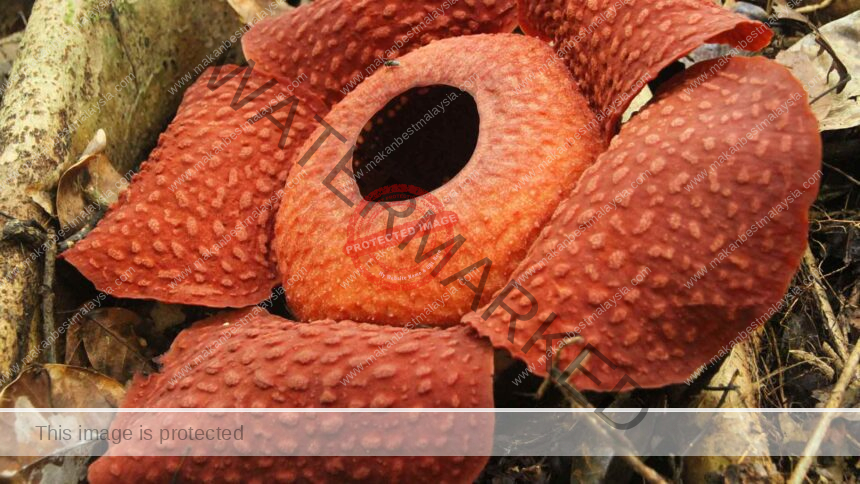Gunung Gading National Park
Sarawak adalah negeri yang terbesar di Malaysia, dengan keluasan hampir sama dengan Semenanjung Malaysia. Salah satu tarikan di Sarawak ialah Gunung Gading National Park.
Sarawak terletak di bahagian barat laut Pulau Borneo, dan bersempadan dengan Brunei dan Sabah (Malaysia) di utara, dan Kalimantan (Indonesia) di timur dan selatan.
Sarawak mempunyai pantai yang rendah dan berlekuk-lekuk di sepanjang Laut China Selatan.

Sarawak mempunyai iklim khatulistiwa dengan hutan hujan tropika dan spesies tumbuhan dan haiwan yang berlimpah.
Sarawak juga terkenal dengan sistem gua yang menakjubkan di Taman Negara Gunung Mulu, yang merupakan Tapak Warisan Dunia UNESCO.
Sungai Rajang adalah sungai terpanjang di Malaysia, dan Empangan Bakun, salah satu empangan terbesar di Asia Tenggara, terletak di salah satu anak sungainya, Sungai Balui.
Gunung Murud adalah titik tertinggi di Sarawak, dengan ketinggian 2,424 meter.
Gunung Gading National Park
Gunung Gading National Park, yang terletak berhampiran dengan pekan kecil Lundu di Sarawak Barat Daya, adalah sebuah taman negara yang menakjubkan.
Sebelum ini, Gunung Gading telah ditubuhkan sebagai Hutan Simpanan pada tahun 1929 dan diisytiharkan sebagai Taman Negara pada tahun 1983 dengan keluasan keseluruhan 4,196 hektar.
Taman Negara Gunung Gading adalah salah satu tempat terbaik di Asia untuk melihat bunga Rafflesia yang spektakuler, sejenis tumbuhan parasit tanpa daun yang menghasilkan bunga terbesar di dunia.
Selepas 10 tahun sebagai zon konservasi untuk melindungi tumbuhan luar biasa ini, taman ini dibuka kepada pengunjung pada tahun 1994.

Taman Negara Gunung Gading hanya 5 minit memandu dari pekan kecil Lundu, yang berjarak 80km melalui jalan darat dari Kuching (1-2 jam memandu).
Ejen pelancongan berpangkalan di Kuching boleh mengatur lawatan.
Pengembara bebas boleh menggunakan pengangkutan mereka sendiri atau mengambil bas dari Kuching Sentral ke Lundu.
Bagi mereka yang berminat dalam berjalan di atas laluan yang ditetapkan dalam kehijauan lebat boleh menuju ke Gunung Gading, sebuah harta karun keajaiban alam.
Pengunjung ke Gunung Gading mungkin juga dapat melihat bunga terbesar di dunia, Rafflesia, dalam penuh kembang dan kemegahan.

Puncak gunung yang kasar yang membentuk Taman memberikan latar belakang pemandangan indah kepada pekan berhampiran Lundu, dan pantai di Pandan dan Siar.
Taman Negara Gunung Gading adalah destinasi yang sesuai untuk mereka yang ingin melihat keajaiban alam semula jadi dan menikmati suasana hutan yang damai dan indah.
Pengunjung juga boleh mengambil peluang untuk belajar tentang bunga Rafflesia yang unik dan mengagumkan. Taman ini pasti memberikan pengalaman yang tidak dapat dilupakan kepada pengunjung.
Jadi, jom kita jelajahi dan nikmati keindahan semula jadi Gunung Gading National Park!
NATIONAL PARK BOOKING OFFICE
Address: Visitor Information Centre,
Old Court House Kuching,
7, Jalan Barrack, 93000 Kuching, Sarawak, Malaysia
GUNUNG GADING NATIONAL PARK
Operating Hours:
8:00 am to 5:00 pm
Monday – Sunday (including public holidays)
Address: 94500 Lundu, Sarawak.
SARAWAK FORESTRY CORPORATION
Address: Lot 218, KCLD, Jalan Tapang, Kota Sentosa, 93250 Kuching, Sarawak.









